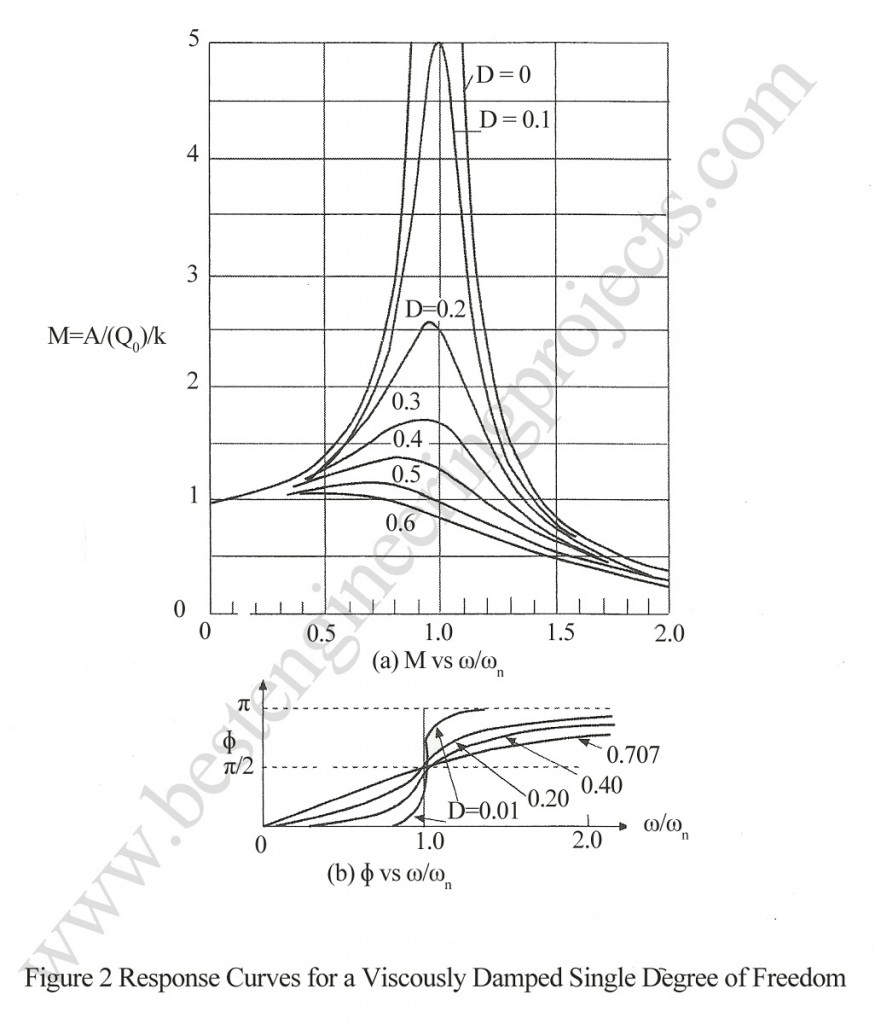In foundation soil system damping is always present in one form or another. For this case fig. 1 (a), the equation of motion is:
———-(1)
———-(2)
The solution of equation (2) is done by applying the concept of rotating vector. In the figure 1 the exciting force vector Q0 is placed with a phase angle ahead of the displacement vector A. The equation of displacement may be expressed as:
———-(3)
In figure 1 (b) the position of motion vector is shown. In figure 1 (c) the position of force vector is shown. The force vectors act opposite to that of motion vectors. The force vector Q0 is placed with a phase angle ahead of the displacement vector A resolving the force in the vertical and horizontal direction, we have,
———-(4)
And ———-(5)
Solving for A and we have,
———-(6)
And ———-(7)
———-(8)
———-(9)
———-(10)
———-(11)
The equations are plotted for various values D as shown in figure 2(a) and (b). These curves are referred to here as response curves for Constant-force-amplitude-excitation. In the figure it is seen that maximum amplitude occurs at a frequency slightly less than the undamped natural circular frequency, where
. The frequency at maximum amplitude will be referred to as resonant frequency fm for constant force Q0.
Resonant frequency at maximum amplitude
———-(12)
Put and
, then
Or,
Or,
Or,
Or,
Or, ———-(13)
Taking positive sign, we get,
———-(14)
Or, ———-(15)
———-(16)
Magnification factor at resonant frequency is given by,
———-(17)
———-(18)
When , fmax = 0 which means that the maximum response is the static response.
The maximum amplitude at resonance will be,
———-(19)
When damping in the system is neglected, then
———-(20)

